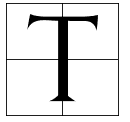Member-only story
In Search of a Less Stupid Calendar
Why is the history of calendar reform a history of failure?
 The calendar we use is, well, dumb. The months are all different lengths, and these lengths don’t follow any pattern. There’s a leap year. Important events like Thanksgiving, Election Day, and Easter all bounce around on the calendar. Is this the best we can do?
The calendar we use is, well, dumb. The months are all different lengths, and these lengths don’t follow any pattern. There’s a leap year. Important events like Thanksgiving, Election Day, and Easter all bounce around on the calendar. Is this the best we can do?
Part of the problem is that our calendar is very old. In its essentials, it dates back to Julius Caesar, who implemented it before the invention of Christianity, firearms, or computers. Caesar (or whoever he had doing his calendar work) understood that a year was about 365.25 days. Therefore, he modified the existing Roman calendar to have 12 months of 30 or 31 days (with the exception of that pesky Februarius, which had 28). By adding an extra day to Februarius every fourth years, he solved the problem of the extra quarter-day.
Or so he thought. Unfortunately, the Romans were a little bit off on their calculations. A year isn’t 365.25 days; it’s actually more like 365.2422 days. This didn’t matter much at first, but over time it caused trouble. The Julian calendar added an unnecessary day every 128 years. By the Renaissance, those extra days had added up, and Easter was happening farther and farther from its traditional time of year.
